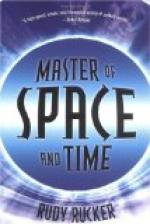For some time the telegraph line between Washington and Baltimore remained on exhibition as a curiosity, no charge being made for demonstrating it. Congress made an appropriation to keep the line in operation, Vail acting as operator at the Washington end. On April 1, 1845, the line was put in operation on a commercial basis, service being offered to the public at the rate of one cent for four characters. It was operated as a branch of the Post-office Department. On the 4th of April a visitor from Virginia came into the Washington office wishing to see a demonstration. Up to this time not a paid message had been sent. The visitor, having no permit from the Postmaster-General, was told that he could only see the telegraph in operation by sending a message. One cent being all the money he had other than twenty-dollar bills, he asked for one cent’s worth. The Washington operator asked of Baltimore, “What time is it?” which in the code required but one character. The reply came, “One o’clock,” another single character. Thus but two characters had been used, or one-half cent’s worth of telegraphy. The visitor expressed himself as satisfied, and waived the “change.” This penny was the line’s first earnings.
Under the terms of the agreement by which Congress had made the appropriation for the experimental line, Morse was bound to give the Government the first right to purchase his invention. He accordingly offered it to the United States for the sum of $100,000. There followed a distressing example of official stupidity and lack of foresight. With the opportunity to own and control the nation’s telegraph lines before it the Government declined the offer. This action was taken at the recommendation of the Hon. Cave Johnson, then Postmaster-General, under whose direction the line had been operated. He had been a member of Congress at the time the original appropriation was voted, and had ridiculed the project. The nation was now so unfortunate as to have him as its Postmaster-General, and he reported “that the operation of the telegraph between Washington and Baltimore had not satisfied him that, under any rate of postage that could be adopted, its revenues could be made equal to its expenditures.” And yet the telegraph, here offered to the Government for $100,000, was developed under private management until it paid a profit on a capitalization of $100,000,000.
Morse seems to have had a really patriotic motive, as well as a desire for immediate return and the freedom from further worries, in his offer to the Government. He was greatly disappointed at its refusal to purchase, a refusal that was destined to make Morse a wealthy man. Amos Kendall, who had been Postmaster-General under Jackson, was now acting as Morse’s agent, and they decided to depend upon private capital. Plans were made for a line between New York and Philadelphia, and to arouse interest and secure capital the apparatus was exhibited in New York City at a charge of twenty-five




